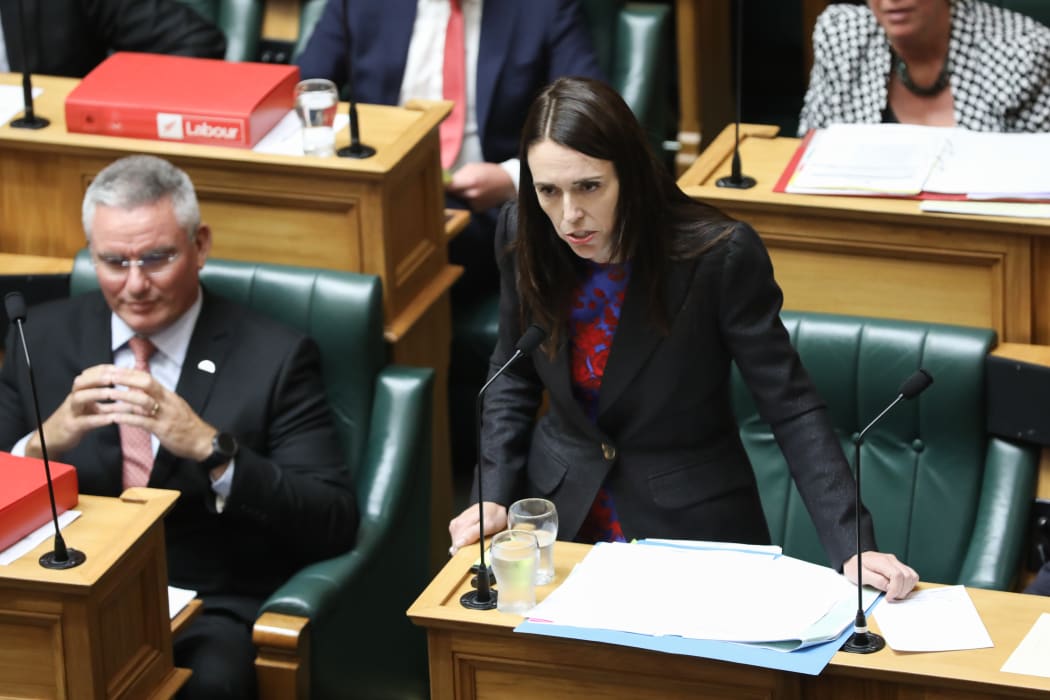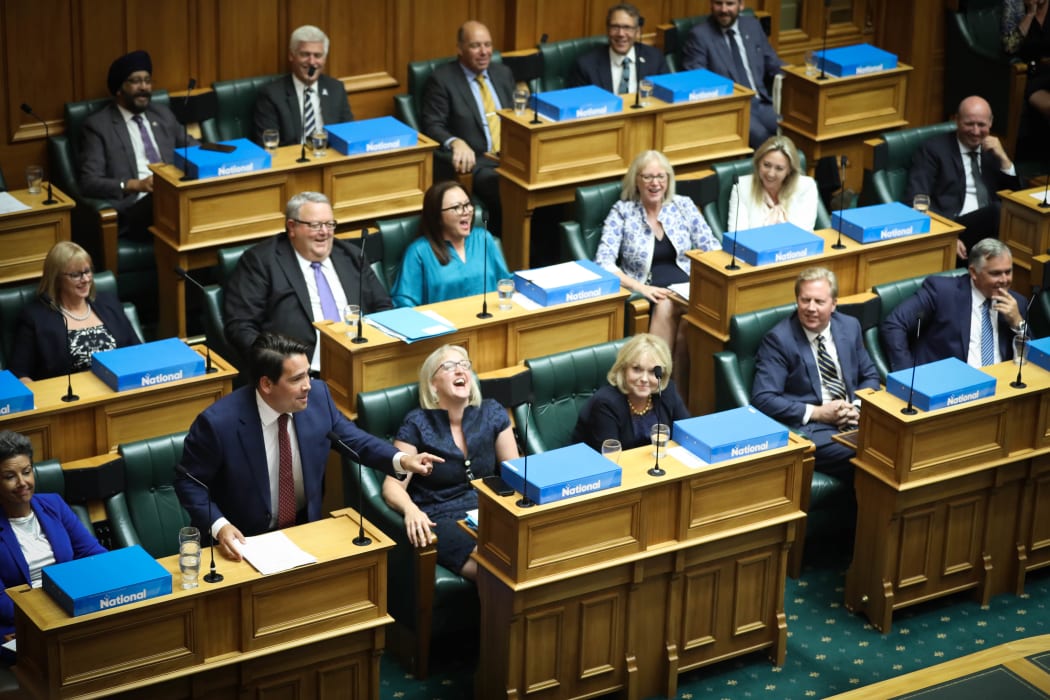On sitting days, after a quick karakia and a flick through the incoming mail, the House moves on to its first big order of business.
The twelve daily questions to ministers are the main event in the centre ring. And the biggest draw is the first match-up, usually a question from the Leader of the Opposition to the Prime Minister.
This is such a standard contest that even if the Prime Minister is away the first question is still directed to her. In which case it is answered by her deputy as if he were literally she - something that can tangle everybody in knots.

Prime Minister Jacinda Ardern takes the offensive in answering a question. Photo: VNP / Phil Smith
The go-to primary question from both the Leader and Deputy Leader of the Opposition is something like “Does she stand by all her Government’s statements, policies, and actions?”
A primary question is on notice - meaning the target gets it is in advance. If it is specific it gives the minister a chance to get briefed, do some reading and prepare possible answers in anticipation of the likely follow-ups. That preparation is necessary because if it is specific the Speaker will demand that the answers are equally specific.
But if the primary question is wide open (as questions to the Prime Minister invariably are), you can’t really expect preparation, or much detail. So, frequently, a detailed series of follow-up questions get vague answers because the topic wasn’t foreshadowed.
Today's primary was the one above and the topic turned out to be housing. In response to some of the supplementary questions the Prime Minister reiterated a previous response with the preface “if the member had listened to my previous answer…”
And it's true that often questions have already been addressed in previous answers. The casual observer might think 'but they just answered that question, why ask it again. Aren't they listening?'
But in the House it’s a more complicated than that.

Leader of the Opposition Simon Bridges points the finger at the Government during the debate on the Prime Minister's Statement. Photo: VNP / Daniela Maoate-Cox
There is a rule that all of the MPs must be completely silent during the question. And they are. Not so much during the answer.
Strictly speaking it should be quiet then too, but practice over the decades has allowed increasing interjections, bellowing, and barracking. Sometimes farmyard noises chorus from the National backbench.
The cacophany is at its most deafening when the Prime Minister is on her feet answering a question. Especially if the topic is controversial, and even more so if her defence is attack.
The Parliamentary audio system (and RNZ’s technical people) are very good at eliminating the cacophony for TV and the radio.
Inside the House it’s more like a bear pit. For the bear. The odds of the Leader of the Opposition hearing an answer aren’t always that high. That’s surely no surprise to him because he’s often bellowing as well.
This wall of noise tactic has upsides and downsides.
The upside is that by shouting over an answer the Opposition forces the Prime Minister to also shout, and so potentially to appear belligerent. It might even throw her off her game.
The downside is that it makes it all but impossible to craft a good follow-up question based on the answer to the previous one. This rather negates the power of using supplementary questions to craft a web of logic in which catch your prey. Perry Mason it is not.
Frequently though MPs have all of their supplementary questions pre-written and don’t give themselves a lot of leeway for springing a trap regardless.
Sometimes, for MPs hoping to catch the crown, it seems the bray's the thing.


